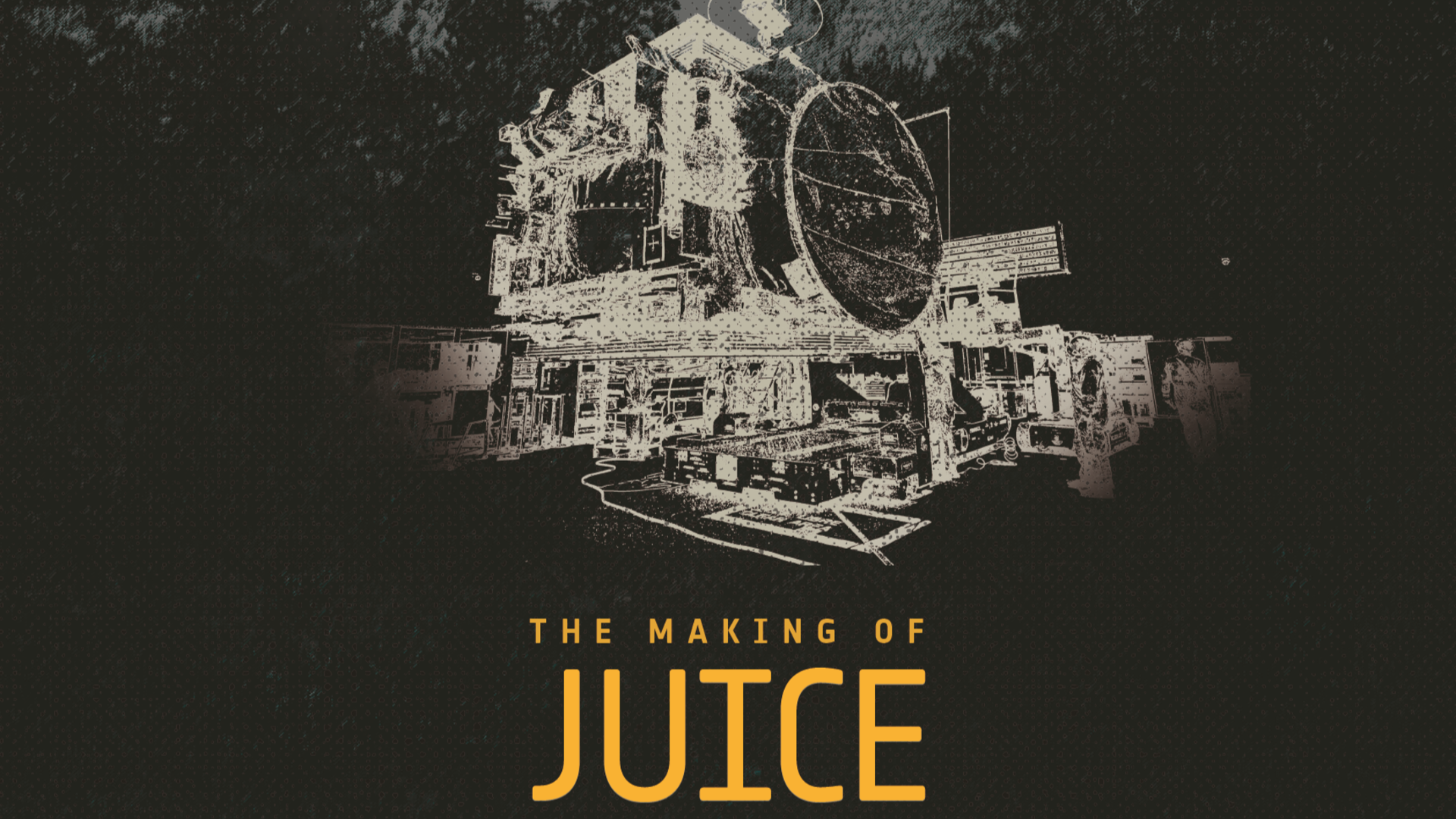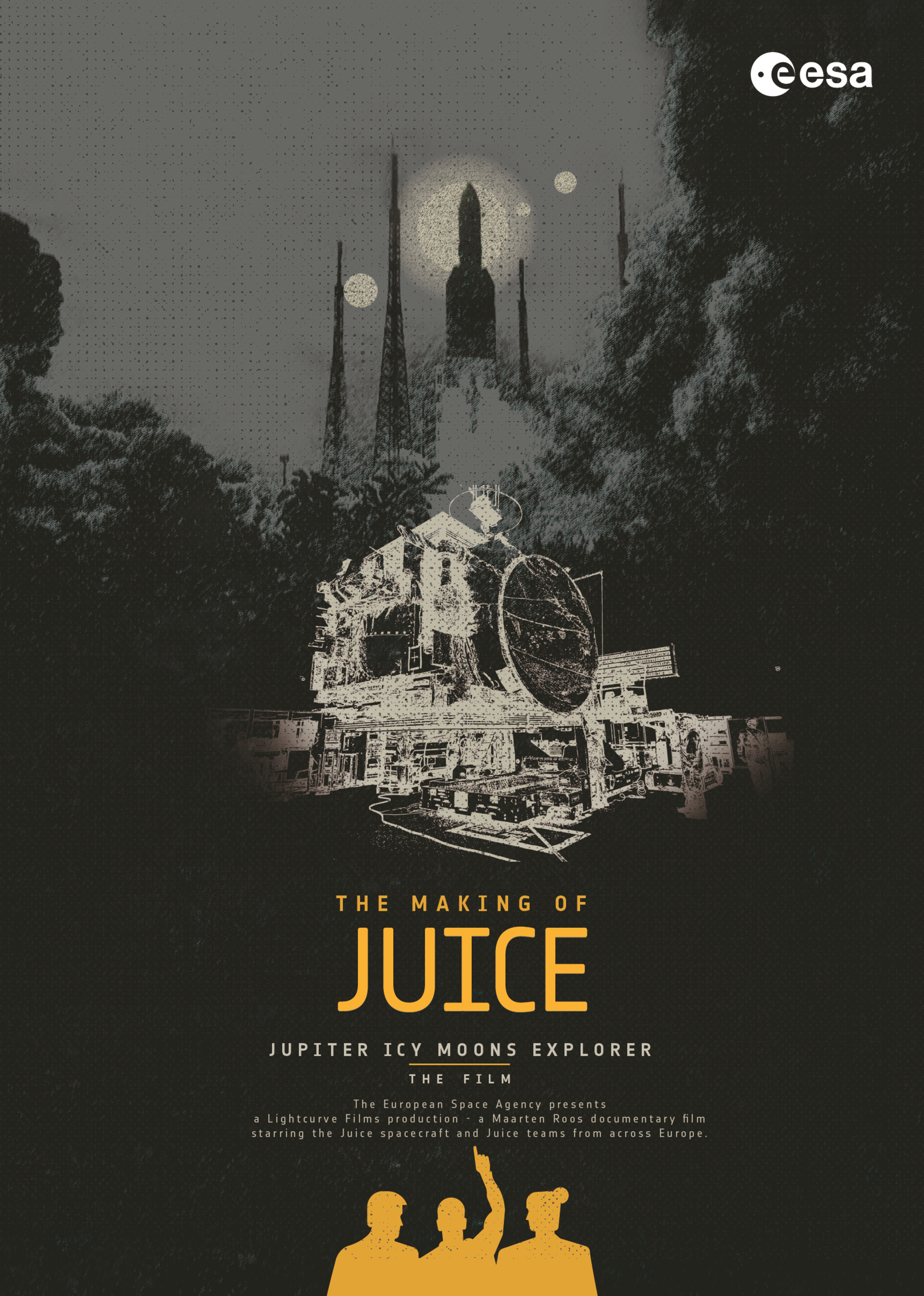
The European Space Agency's Jupiter Icy Moons Explorer (JUICE), which blasted off for the Jovian system on April 14, has now got its very own documentary chronicling the latter stages of the mission's development, capturing the challenges of assembling a spacecraft during a pandemic and the exultation of a tricky launch.
The two-hour documentary, simply called "The Making of JUICE," is the brainchild of JUICE Project Manager Giuseppe Sarri and Project Scientist Olivier Witasse. It's currently available for free on the European Space Agency's YouTube channel.
"We came up with the idea of filming key moments in the final stages of the development and testing of JUICE," said Sarri in a statement. In March 2019, JUICE had just successfully passed through its Critical Design Review and received the go-ahead to integrate all the instruments onto the craft and begin testing it. "It seemed just the right moment to start recording our progress, with the idea to capture not only the technical aspects but, above all, the human elements of this very challenging endeavor."
The duo teamed up with planetary scientist Maarten Roos, also a documentary filmmaker, who spent the next three to four years interviewing the mission's scientists all over Europe. Roos also meticulously followed the building and testing of the spacecraft in Airbus' clean rooms in Germany.
Related: Europe's JUICE probe will be 1st to use gravity of Earth and moon to slingshot to Jupiter
JUICE was an important subject for this documentary because it is considered the European Space Agency's biggest and most ambitious mission yet. The spacecraft is voyaging to Jupiter to study three of the gas giants' famous Galilean moons — the icy worlds of Europa, Ganymede and Callisto (the odd moon left out being the fiery, volcanic Io). JUICE will perform two fly-bys of Europa, 12 fly-bys of Ganymede and 21 of Callisto before settling into orbit around Ganymede, which is the largest moon in the solar system, bigger even than the planet Mercury.
Jupiter's icy moons are of great interest because at least two of them, Europa and Ganymede — and possibly all three — are believed to harbor subsurface oceans that could potentially have conditions suitable for primitive life.
It's a tremendously exciting mission, but also a challenging one. On that note, filming was challenging, too.
Not long after production on the film began, the COVID-19 pandemic struck, resulting in the mission getting delayed by a year. To keep the public abreast of how the mission was coming along during this extended period, Roos made some of his footage available early in the form of a dozen five-minute shorts and 17 one-minute snippets prior to JUICE’s successful blast-off from French Guiana.
Then, following the launch, Roos edited all the footage to produce the final cut of "The Making of JUICE," which is the final product that premiered on ESA's YouTube channel on November 23rd.

"It is an entertaining movie, easy to watch, telling the story of JUICE from initial conception to the start of its voyage to Jupiter," said Sarri. "And it shows that behind all great projects are great people.”
Among these great people featured in the film are the mission's primary scientists, as well as the engineers and technicians who built, tested and launched the spacecraft itself. We meet Michel Blanc of the Institut de Recherche en Astrophysique et Planétologie in France, for instance, who constructed the original plan for what ultimately became JUICE. The film speaks to Michelle Dougherty of Imperial College London as well, who is the science lead on JUICE's magnetometer instrument and who recalls how the mission was initially a joint venture with NASA, and had to be hurriedly redesigned in just 3 months when NASA dropped out.
We also meet the engineers who don't normally get the limelight. For instance Andrea Hertel,the only woman in the mechanical engineering team at Airbus who worked on JUICE, talks about how the spacecraft is strongly magnetic. This meant the team had to be very careful with what tools they used around it — even a bunch of car keys could potentially have been a problem, had they gotten too close and become attached to the spacecraft's components.
We also catch a glimpse of the opening of the spacecraft's solar panel wings as they undergo testing in the clean room. We learn that solar illumination is so low at Jupiter, between 25 and 30 times less than what Earth experiences, that the solar panels can only provide 900 watts of energy. That's barely enough to power a hairdryer. Therefore, all the functionality on the spacecraft has to be designed to operate with this energy constraint.
Beyond that, we also see first-hand how the COVID-19 pandemic affected the mission's development. Interviewed a few months before the pandemic hit, Sarri talks about how launch was scheduled for May 2022, to take advantage of a number of carefully planned fly-bys of the inner planets to gain the gravitational boost required to fling the spacecraft to Jupiter.
"For us it is very important to be on time," Sarri says in the film, but the pandemic necessitated a significant change in plans, including launch a year later and an extra year of travel time to Jupiter, from 7 to 8 years with arrival now falling in 2031. The film shows how the scientists and engineers kept things moving on the mission during the pandemic nonetheless, with teams of technicians and engineers forming "bubbles" and working in separate shifts so as to be kept apart and limit the spread of the virus .
All in all, "The Making of JUICE" is a terrific behind-the-scenes look at the challenges inherent in building and sending an interplanetary mission into space. During a pandemic as well, in this case.
The film ends with the successful launch of JUICE and the exhilaration of the scientists and engineers. Perhaps we’ll get a sequel in ten years once JUICE has arrived at Jupiter and begun studying the icy moons.
You can watch "The Making of JUICE" for free on the European Space Agency's YouTube channel.







